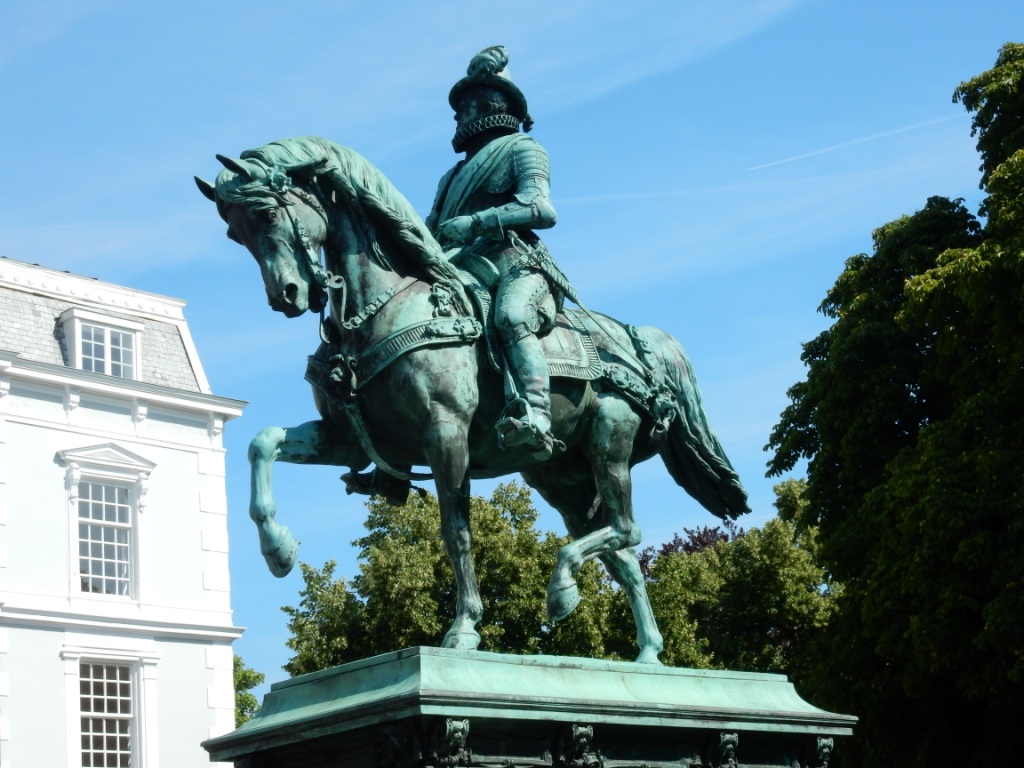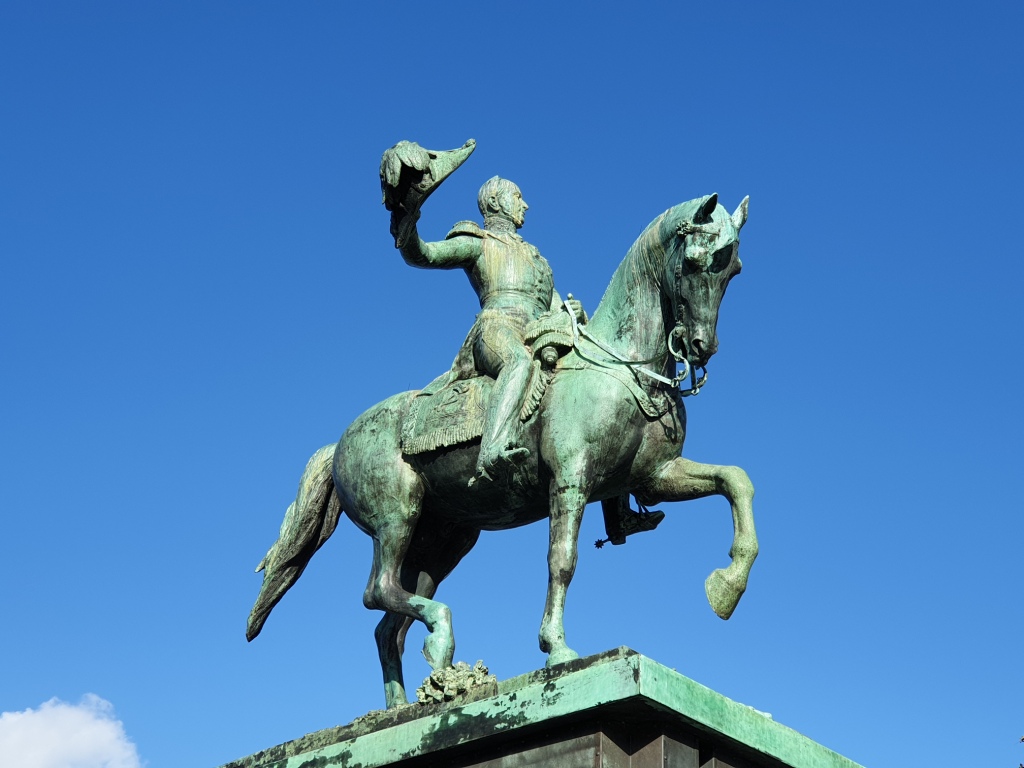A wonderful myth says that you can tell from an equestrian statue how the rider died. And the code is: if the horse is rearing, i.e. both front legs are in the air, the rider was killed in battle. If the horse has one leg up, the rider was wounded in battle or died of his wounds. If all four legs are on the ground, it means the rider died peacefully in his bed.
Since there are two equestrian statues in The Hague, I can check in our own city whether the myth is true or not.
William of Orange
Opposite Noordeinde Palace, the working palace of our current king Willem-Alexander, you can find the equestrian statue of his distant ancestor Willem van Oranje, also known as Willem de Zwijger.
If you look at the statue, you can see that the right front and left hind legs of the horse are raised. So according to myth, William of Orange would not have died peacefully in his bed. You could say that is indeed true.
Outlawed
William of Orange was the leader of the revolt of the Dutch provinces against their Lord of the Netherlands, who was also king of Spain, in the 16th century. We know that king from the history books: Philip II. As a member of the nobility, William owed allegiance to Philip, and by joining the revolt, in Philip’s eyes he was a traitor. Therefore, Philip declared William an outlaw. This meant that anyone was free to kill William and would even get a handsome reward for doing so.
On 10 July 1584, Balthasar Gerards managed to kill Willem in the Prinsenhof in Delft with two shots. I learned at school that Willem’s last words were: ‘Mijn God heb meelij met mij en mijn arme volk’ [‘My God have mercy on me and my poor people’]. I found out later that he may have died instantly and that if he could have said anything more, he would have done so in French.
King William II
The second equestrian statue in The Hague is of King Willem II on his favourite horse, Wexy. King William II was the great-great-grandfather of King Willem-Alexander. At an early age (when he was still crown prince) he fought the armies of Napoleon Bonaparte. The climax of these battles was at Waterloo on 18 June 1815, where Napoleon was finally defeated. William was 22 at the time.
Wounded in battle
Crown Prince William was wounded in the Battle of Waterloo, a fate that also befell Wexy. But William was apparently conscious enough to give his parents an account of the battle himself. The letter he sent is preserved in the Royal Collections. The better circles corresponded in French at the time, so the letter begins with the salutation ‘Victoire, victoire!’ In writing to his parents, the Prince emphasises his corps’ important contribution to the battle. He concludes by saying ‘I am wounded by a bullet that pierced my left shoulder, but it does not amount to much. In life and death entirely yours, William.” In his reply, King William I wrote that his son had earned the Military Order of William. Prince William II went down in Dutch history as the ‘Hero of Waterloo’.
Death
King William II was indeed wounded in battle, but he lived another 35 years before dying in 1849, at age 57. Perhaps a little too long a period for his injuries to have been the cause of death. His health had begun to deteriorate in 1848. In March 1949, against the advice of his doctors, he travelled to Tilburg, where he liked to stay. On the way, he tripped over his long coat and fell down six steps. Once in Tilburg, his condition deteriorated: he became increasingly short of breath and he died on 17 March.
The statue shows Wexy with his left front and right hind legs raised (the other way around from William of Orange’s horse) . Since William II didn’t die from battle wounds, Wexy should have been standing with four legs on the ground. But then the statue would have been much less inspiring.
The statue of William II, incidentally, is out of sight for the time being. It was removed from its spot on 14 November to make way for the watchtower that will soon provide a view of the Binnenhof. A temporary place for the statue is still being sought; it will return to its spot on the Buitenhof after the renovation is completed.




